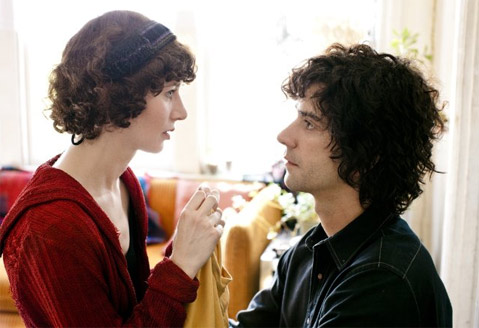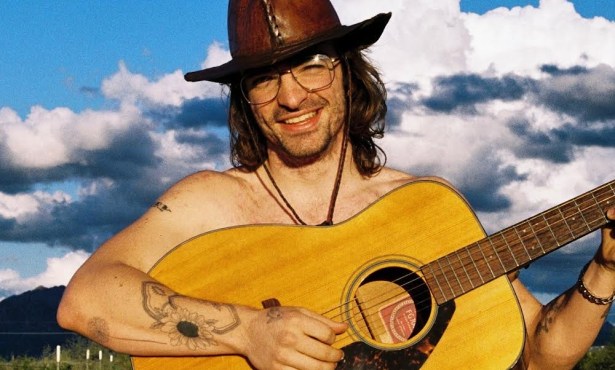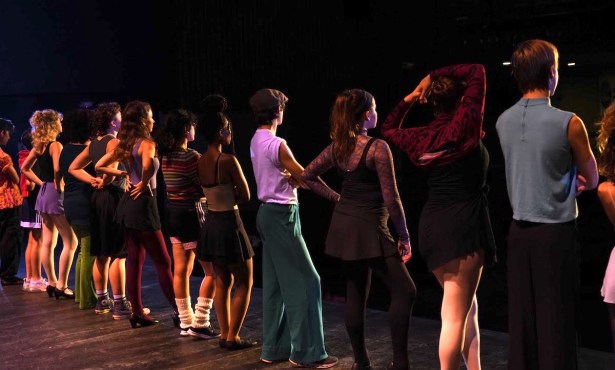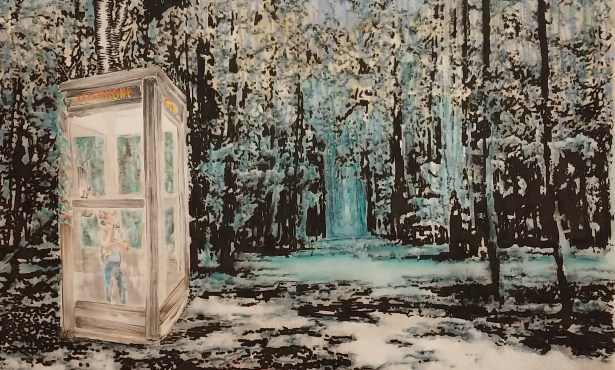The Future
Miranda July, Hamish Linklater, and David Warshofsky star in a film written and directed by July.

In Miranda July’s weirdly brilliant new film The Future, minimalism and surrealism make a new kind of pact, one never quite seen on the screen before. A handful of characters — and the film itself — move slowly through a shifting landscape of seeming dream states and wakefulness in a limited series of locations, and yet, for those of us drawn deep into July’s world of curiosities, the sum effect is a slow-brewing hypnosis experience in the theater.
All is not bizarre or rationality straining here either, which adds to the power of the whole. While a slight veneer of oddity keeps the film in the realm of the surreal — loopy lines of dialogue, narrative twists, time-space tweak-ups, intercut shots of a talking cat (real or imagined, we never know) — the emotional realities keep tugging at us. For example, between the central couple played by July and Hamish Linklater, the pain and strain of relationship and career woes hit us, sometimes when least expected, while the nagging buzz of mortality and time’s hurtling passage make their presence known along the sometimes mesmeric way. We’re not always sure whether to laugh, cry, or succumb to the film’s arty opiate haze, and therein lies much of The Future’s fascinating appeal.
“I always wanted to follow the news,” says July’s character, Sophie, early in the film, in a tip-off to her aloof, alien mind state, “but now I’m so far behind, what’s the point?” Adrift, Sophie looks for signs and pathways, including an odd hookup with an ill-fitting suburban soul mate (David Warshofsky) in Tarzana, whose daughter is busily digging a hole to China in the backyard.
As for artistic parallels, in The Future we readily detect whiffs of David Lynch’s influence at many turns, if Lynch were a lighter, less violence-prone cine surrealist. But the more telling quality at work here is something uniquely July-esque, familiar to both this wonder and her other offbeat mini-masterpiece, Me and You and Everyone We Know. As filmmakers go, July’s multidiscipline outsider status becomes her, and she brings to the film medium the freshness of vision of one who has shown herself to be a strong (and, yes, strange) short-story writer, freely exploring fluidity of plot, character, and structure.
Her work as a performance artist, seeking new subversions and mutations of time-space expression, is also part of the résumé, especially with her beautifully semi-zombie-esque role in The Future. In the film, actually an expansion of a performance piece she did at the Kitchen in N.Y.C., she occasionally morphs into dreamy dance moves, as if in this body-kinetic activity, she is moving beyond the pale of words and socially-approved life choices.
Aided by coolly righteous and apt cinematography by Nikolai von Graevenitz and pitch-perfect music by Jon Brion (accustomed to scoring films from the dreamy fringes through his work with P.T. Anderson), The Future is certainly one of the most fully realized American films of the year — even though its aim is to appear vaporous. Love and life troubles aside, the film is also a parable on the lightness and strangeness of being.
By the time we hear Peggy Lee singing the couple’s “reality check” song “Where or When” at film’s end, we recognize the blend of looseness and structure in July’s artistic scheme, one in which the present and future blend together on a common, imaginary playground.



